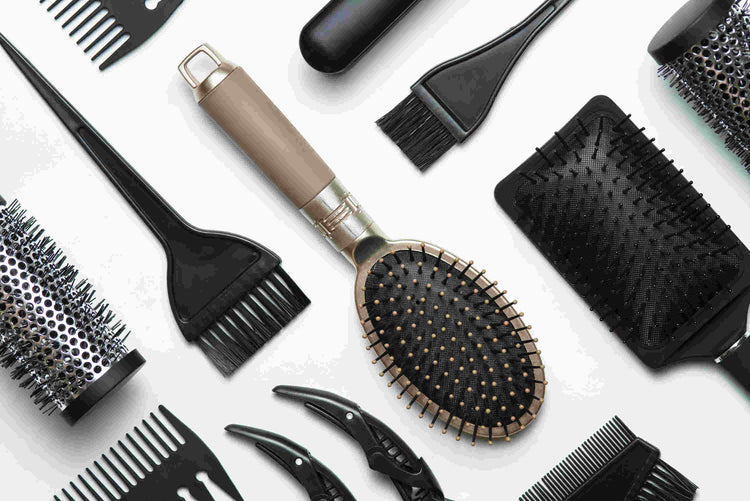Why do I have lower back during my period?


Menstruation is a biological process that occurs once a month in most women. This process involves all the superficial layers of the uterus being expelled through the vagina. It normally lasts 6–9 days. During menstruation, severe lower abdominal pain is common. Dysmenorrhea is another term for painful menstruation, which occurs when the uterus contracts more intensely than usual. This can result in severe and occasionally debilitating cramps, leg discomfort, and other symptoms, including lower back pain.

Back pain induced by your period can range from a little annoyance to crippling agony that limits everyday activity. Back discomfort related to your menstruation can occur a few days before it begins and subside once it has finished. This back pain is often musculoskeletal and brought on by hormone changes.
For ease, painful periods, known as dysmenorrhea, are classified into two categories:
Primary dysmenorrhea refers to menstrual cramps that occur repeatedly and are not caused due to any disorder. The pain usually occurs one or two days before your period or when the bleeding begins. You may get mild to severe pain in your lower abdomen, back, or thighs. It is caused by excessive levels of prostaglandins, hormones that make your uterus contract during menstruation and childbirth. The pain results from releasing these hormones when the lining (endometrium) slows off during your menstrual period.
A few underlying medical conditions affecting the reproductive organs might be the root cause of secondary dysmenorrhea. The discomfort frequently lasts longer than typical menstrual cramps and worsens over time.
The most significant causes of lower back period pain are as below,
It is a set of physical, emotional, and behavioural symptoms that sets in 1 to 2 weeks before menstruation. During their menstrual cycle, women with PMS are hypersensitive to their normal cyclic hormones, i.e., progesterone and oestrogen. Changes in hormone levels can cause the onset of this syndrome.
The most common symptoms of PMS include:
Mood swings.
Abdominal cramps.
Severe lower back pain
Bloating or tummy pain.
Breast tenderness.
Severe PMS symptoms could indicate premenstrual dysphoric disorder (PMDD). Three out of every four women report experiencing PMS symptoms at some point.
Pelvic inflammatory disease is a condition that affects your reproductive organs. Mostly it is caused by a sexually transmitted infection that spreads from your vagina to your abdomen. This parasite attacks the uterus, ovaries, and fallopian tubes.
How are periods affected by pelvic inflammatory disease?
The infection often begins in your vagina and moves up into your uterus if untreated. From there, it may also invade your fallopian tubes and ovaries. The cells and lining inside your uterus are affected when the infection reaches this area. During your period, this lining is shed. PID alters how your uterus removes the lining from your body.
When you have PID, your period flow could be much heavier than usual, and you may have pain in the lower back area. A longer than usual period could also result from increased blood flow.
It can occasionally postpone the start of your period.
In the case of endometriosis, the tissue that normally lines the uterus grows in other organs, like the ovaries and fallopian tubes. Cysts, adhesions, and scar tissue can develop over time due to the endometrial-like tissue that proliferates outside your uterus. It could lead to painful periods, pelvic pain, and menstrual cramps. It can affect women of any age, including teenagers. Having trouble while getting pregnant is another issue that many people with endometriosis may face.
The endometrium is a particular glandular tissue that reacts to hormones and lines the uterus. It thickens each month in preparation for pregnancy. The endometrial tissue sheds during your menstrual cycle if pregnancy is unsuccessful.
In Adenomyosis, some of this tissue develops into the myometrium (a muscle that lines the inner wall of the uterus). The tissue continues to behave as if it were lining the uterus, thickening and bleeding in time with a woman's monthly menstrual cycle.
Symptoms of adenomyosis include,
Pelvic pain
Heavy periods
Painful intercourse
Infertility
Abnormally enlarged uterus
Period cramps that are mild to moderate can be managed with the traditional therapies and treatments described below.
Many home remedies, including the following, can help ease menstruation cramps:
- Heating Pad
Applying a warm patch or wrap to your abdomen can help relax the uterine muscles. These muscles cause period cramps. Heat can also increase circulation in your abdomen, which can help to relieve pain.
- Exercise
Natural endorphins in the body are known to improve mood. They have a pain-relieving effect. Aerobic exercise is a well-known strategy to increase endorphins. Exercise may not appeal to you right before or during your period, but it does release endorphins.
Birth control pills work by reducing the number of prostaglandins, which are the molecules produced by your body to stimulate the uterine muscles to contract. There is less pain when there are fewer contractions. Birth control drugs can also reduce blood flow during a woman's menstruation.
Nonsteroidal anti-inflammatory drugs (NSAIDs) are members of a therapeutic medicine class that reduces periods of pelvic pain, inflammation, and blood clots. They stop the production of prostaglandins and relieve severe menstrual pain.
If a condition like endometriosis or adenomyosis causes your menstrual cramping, surgery to repair the problem may alleviate your pain.
Endometrial Resection: The removal of the lining of the uterus, i.e., endometrium, is called endometrial resection. After the removal of the endometrium, menstruation often stops or becomes lighter.
Hysterectomy: The uterus and its counterparts are partially or completely removed during a hysterectomy. It is a difficult decision for females of reproductive age who intend to have children later in life. Females in menopause, on the other hand, can undergo this surgical technique to relieve pelvic pain caused by various underlying disorders in the reproductive organs.
Lower back pain might be caused by menstruation. Your lower back discomfort may be more severe if you have endometriosis, pelvic inflammatory disease, or uterine fibroids. If your symptoms are severe, you should consult a doctor. An OB/GYN expert can assist you in determining the source of your discomfort and treating it.
To view our range of pain medication, see our Pain Relief information page here.








Plus get the inside scoop on our latest content and updates in our monthly newsletter.